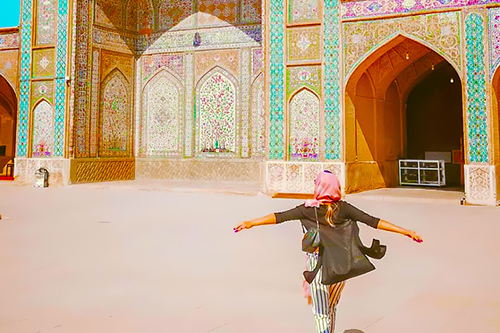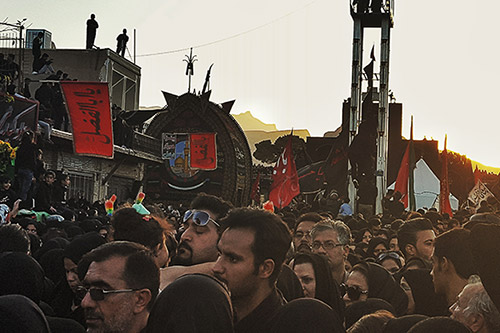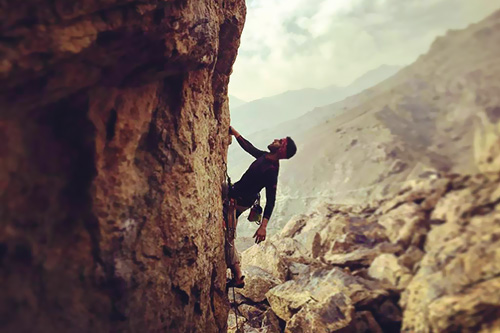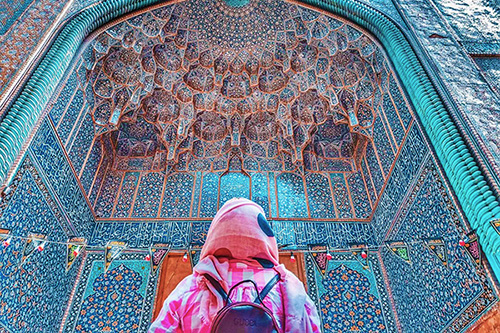 Signin with Google
Signin with Google Signin with Facebook
Signin with Facebook About Iran
About IranReligious Eids and Celebrations in Iran
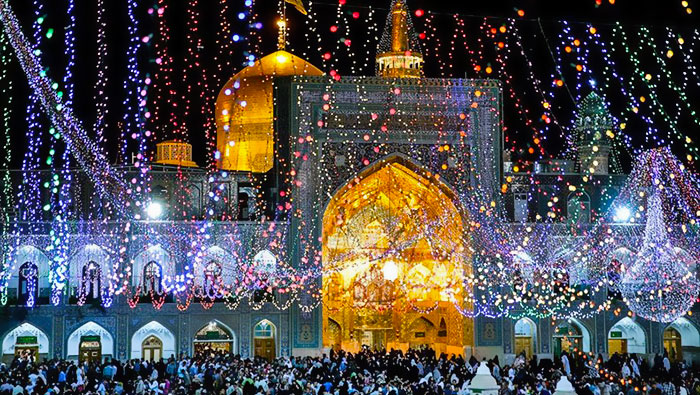
With a population of over 80 million, around 99.4 per cent of Iranians are Muslims (93 per cent Shia and seven per cent Sunni branch of Islam). The remaining 0.6 rates are minorities, mostly including Zoroastrians, Christians and Jews. The state religion in Iran is Shia Islam. Yet, the other mentioned religions are officially recognized and have reserved seats in the country's parliament. Like other countries, each of these religions has its celebrations, some are observed nationally and some only by the followers of that creed. Here is a list of these religious celebrations in Iran.
Since religious Eids follow the Islamic lunar calendar, they do not have a fixed day in the Gregorian/ Solar calendar. Read about Iran's Public Holidays here, or get to know about Iran's tourist sites' off-the-record holidays here.
Islam
- Eid-al-Fitr: pronounced as Eid-e-Fitr in Persian. Probably one of the most prominent Muslim celebrations not only in Iran but also in all of the Islamic countries. Fitr marks the end of Ramadan (fasting month) and is on the first day of the lunar month of Shawwal. In Iran, it is considered a two-day national holiday. This religious festivity has specific traditions like performing its congregational prayer usually in the early morning of Eid day, making unique dishes, getting together, visiting family members and relatives and dining out. Moreover, as it is a two-day holiday, many people take this opportunity to travel.
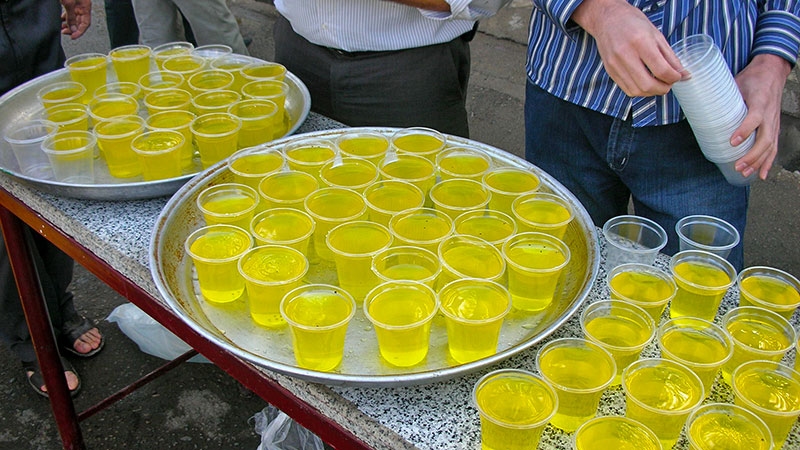
- Eid-e-Qorban: Or in Arabic "Eid al-Adha", literally means Feast of the Sacrifice and is as important as Eid-e-Fitr in the Muslim world including Iran where it is a national holiday. This Eid which falls on the 10th day of the last month of the Islamic lunar calendar marks the end of the annual pilgrimage to Mecca and most importantly is in honour of Ibrahim's (Abraham the Prophet) obedience to God's command when he was called to sacrifice his son (Ishmael). At the very moment when he was about to sacrifice, Ishmael was replaced by a lamb provided by God. On this day, Muslims acknowledge the devotion of Ibrahim to God and his willingness to sacrifice the most beloved person in his life by order of God. Like Eid-e-Fitr, this feast has specific rituals which are common in all Muslim countries consisting Iran, like performing the special congregational prayer in addition to the tradition of sacrificing an animal (specifically by those who have had a pilgrimage to Mecca) such as a lamb and distributing its meat amongst the people especially the poor. In Iran, it is also a time when people get together with their relatives and friends to prepare unique dishes, share meals and celebrate Eid.
- Prophet Muhammad's Birthday: Sunni Muslims regard the 12th of Rabi al-awwal Month (the third month in the Islamic lunar calendar) as the Prophet's birthday, and Shia Muslims believe it is on the 17th day of this month. To prevent any disagreement and as suggested by Shia scholars, Muslims celebrate this event from the 12th to the 17th of Rabi al-awwal Month and call it "The Islamic Unity Week", yet the Shia narration of the Prophet's birthday is considered the official national one-day holiday in Iran. This event is widely celebrated in Iran for almost a week, significantly by preparing local dishes, desserts and sweets and distributing them freely amongst people. Moreover, special public ceremonies are held at mosques and other religious spots all over the country.
- Prophet Muhammad's First Revelation: Also an official national holiday in Iran, the 27th of Rajab (the seventh month of the Islamic lunar calendar), as believed by Muslims, is the day when Prophet Muhammad was first visited by the archangel “Gabriel” who revealed to him the first verses of the Holy Book of Quran and entitled him to prophethood around 1400 years ago in a cave called Hira near Mecca in Saudi Arabia. This event is also broadly celebrated in Iran with rituals and traditions similar to the Prophet's birthday.
- Eid-e-Ghadir Khumm: Particularly an event celebrated by Shia Muslims. This Eid is in commemoration of the day Prophet Muhammad delivered a sermon in 623 CE near a pond named "Khumm" (between the cities of Mecca and Medina) and announced Ali ibn Abi Talib (who later became the first Imam of the twelve Shia Imams) as his successor. This Eid, which falls on the 18th of Dhu al-Hijjah (the twelfth month of the Islamic lunar calendar) is considered an essential religious celebration in Iran where around 99 per cent of the population are Shia Muslims and is a national holiday as well. Apart from celebrating rituals like preparing and distributing free drinks, sweets and other festive edibles another common tradition of this Eid is receiving gifts, usually small notes of money from those family and friends who are considered descendants of Prophet Muhammad and Imam Ali.
- The Fifteenth of Shaban: The 15th of Shaban (the eighth month of the Islamic lunar calendar) marks the last (twelfth) Imam of Shia Muslims' birthday known as Imam Zaman, who is believed to be still alive and will reappear someday bringing peace and justice to the world. Fifteenth of Shaban, which is an official national holiday, might be one of the biggest religious feasts in Iran. On this day all over the country, cities are decorated with lights and ornaments, several stalls are installed on the streets for distributing free sweets and drinks, and people come to the streets to celebrate their Imam's birthday. It is more like an outdoor festival in comparison to other Islamic celebrations.
- Imam Reza's Birthday: 11th of Dhu al-Qa' dah (the eleventh month of the Islamic lunar calendar) is the birthday of the eighth Imam of Shia Muslims, known as Imam Reza. He is the only Imam who, his shrine is located in Iran, in the city of Mashhad among all the 12 Imams. Although Imam Reza's birthday is widely celebrated in Iran with rituals similar to other Islamic celebrations, and every year special ceremonies are held in his shrine, it is not considered a national holiday.

- Imam Ali's Birthday: Known as National Father's Day in Iran. This religious celebration is in honour of the first Shia Imam (Ali), who is a prominent figure in Islamic history, as he was the first person to accept the Prophet's invitation to Islam, he was the Successor of Prophet Muhammad as well as Prophet Mohammad's son-in-law. He was born on the 13th of Rajab (the seventh month of the Islamic lunar calendar). This religious Eid is a national holiday and one of those frequent occasions when Iranian families get together not only for the Imam's birthday but also for Father's Day celebration.
- Hazrat Fatima's Birthday: Also known as National Mother's Day in Iran. the 20th day of Jumada al-Thani (the sixth month of the Islamic lunar calendar) marks the birthday of Prophet Muhammad's daughter -Fatima- who was also Imam Ali's wife. Much like Imam Ali's birthday, it is a feast to celebrate two events, the Prophet's Daughter's birthday and Mother's Day, with a slight difference that Hazrat Fatimah's birthday is not a national holiday unlike Imam Ali's.
Zoroastrianism
The Six Gahanbars: According to Zoroastrian mythology, God created this world in six days. Each of these six Gahanbars represents one of those creation days and is considered a seasonal feast celebrated by Zoroastrian Iranians.
- Maidh-yo-zarem: The first day of creation of the world on which the Sky was created. This Gahanbar is on the 15th of Ordibehesht/ 4 May (the second month in the Persian solar calendar).
- Maidh-yo-shema: The second day of creation of the world on which Water was created. This Gahanbar is on the 15th of Tir/ 21 June (the third month in the Persian solar calendar).
- Paiti-shahem: The third day of creation of the world on which Earth was created. This Gahanbar is on the 30th of Shahrivar/ 20 Sep. (the sixth month in the Persian solar calendar).
- Aya-threm: The fourth day of creation of the world on which Plants were created. This Gahanbar is on the 30th of Mehr/ 21 Oct. (the seventh month in the Persian solar calendar).
- Maidh-ya-rem: The fifth day of creation of the world on which Animals were created. This Gahanbar is on the 20 of Dey/21 Dec. (the tenth month in the Persian solar calendar).
- Hamas-path-maedem: The sixth day of creation of the world on which people were created. This Gahanbar is on the 30th of Esfand/ 19 Feb. (the twelfth and last month in the Persian solar calendar).
Each Of these feasts would continue for five days, and the last day of the festival is considered the most important one. These six Gahanbars are not national holidays in Iran and are celebrated by the Iranian Zoroastrians.

- Sadeh: Regarding Zoroastrian mythology, Sadeh is a festival in celebration of the discovery of Fire (one of the four elements that hold a special place in Zoroastrianism) by Hushang, the second mythical Persian King. This feast is on the 10th day of Bahman/ 29 Jan. (the eleventh month in the Persian solar calendar) when people get together, and light a big fire before sunset usually outside the cities in high places like hills or if not possible, on their houses' rooftops. Sadeh is not a national holiday in Iran. Yet, it has been registered in the country's official calendar and is recognized as a valuable national heritage by all Iranians. This festival is notably celebrated in some cities of Iran like Yazd and Kerman where more Zoroastrians live in comparison to other parts of the country.
- Tirgan: There are a couple of narrations about the origins of this festival, the most famous one associates it with the Zoroastrian divinity of life-bringing rainfall and fertility named "Tishtrya". Tirgan is held on the 13th of Tir/ 3 July (the fourth month in the Persian solar calendar). People celebrate it with special rituals like splashing water with each other, singing traditional songs, dancing, making local foods and sweets and wishing for abundant rainfall. Much like Sadeh, it is mostly celebrated by Zoroastrians. While it is registered in the official calendar of the country, it is not a national holiday.
Christianity
- Christmas: like other Christians around the world Iranian Christians who are mostly of Armenian origins, celebrate this festival as well. However they are a small minority in Iran, near the 25th of December, Christmas vibes are apparent in some cities of Iran like Tehran, Tabriz, and Isfahan (where more Christians live compared to other cities). Shops, restaurants, cafes and other public places set the Christmas decoration including the ornamented tree. The birthday of Jesus Christ is not an official holiday in Iran. However, it has been registered in the country's calendar and is widely respected and even sometimes celebrated by followers of other religions, including Islam.
- Easter: Another important Christian feast which is also celebrated in Iran by followers of this creed. The rituals of Easter in Iran are almost like other countries. Including gathering in Churches, praying, preparing special dishes, colouring eggs, etc. Similar to Christmas, Easter is not regarded as an official holiday in Iran.
Judaism
- Rosh Hashana: The Jewish New Year which occurs in the early autumn in the Northern Hemisphere. Iranian Jews celebrate it with rituals like getting together with family members, praying and eating specific foods and fruits, including fish, honey, apples, etc.
- Yom Kippur: The holiest day in the Hebrew calendar that is also known as the Day of Atonement. It happens ten days after Rosh Hashana, and its traditions in Iran include fasting and praying at Synagogues which is similar to other countries.
By Nazanin Moayed / TasteIran
